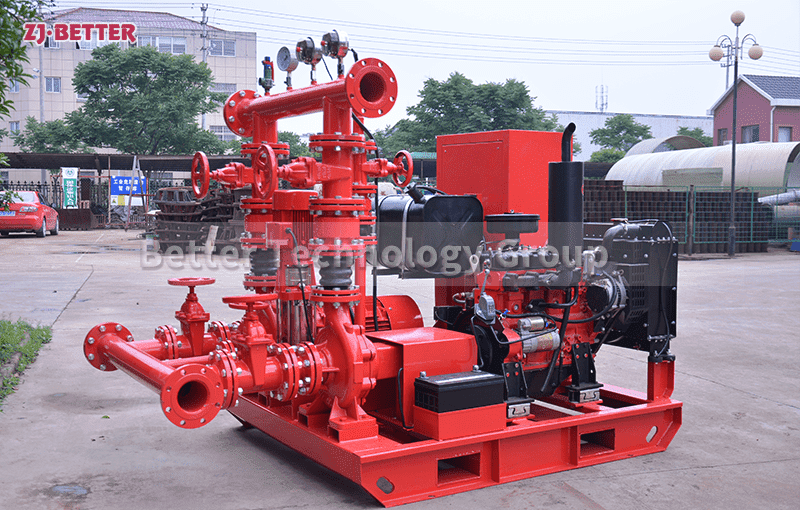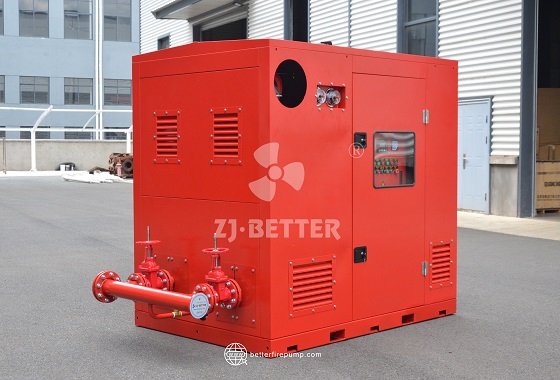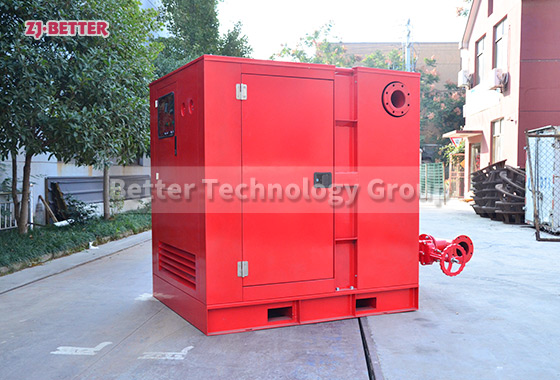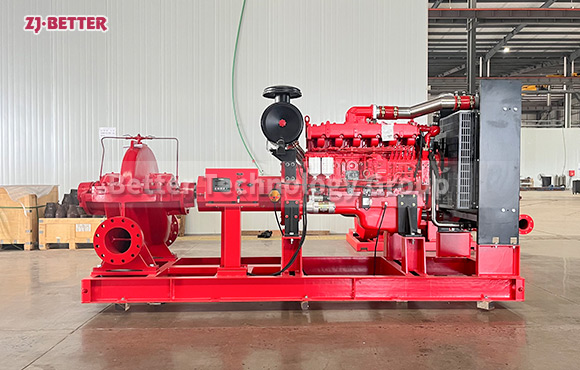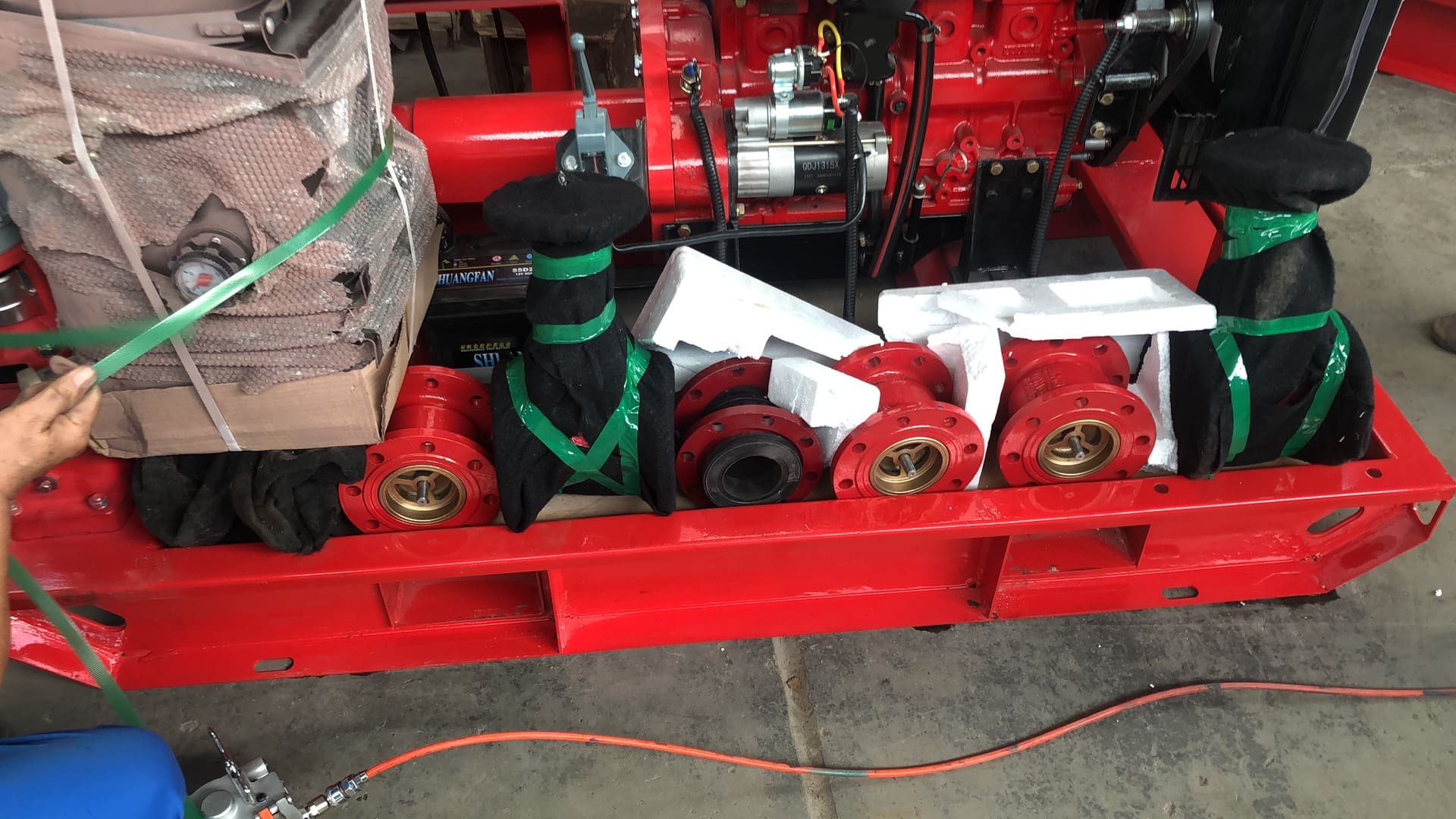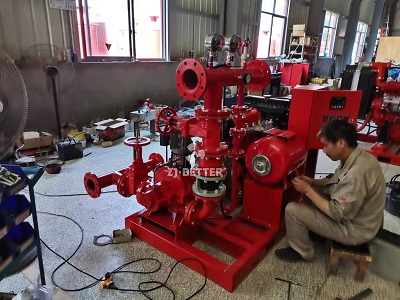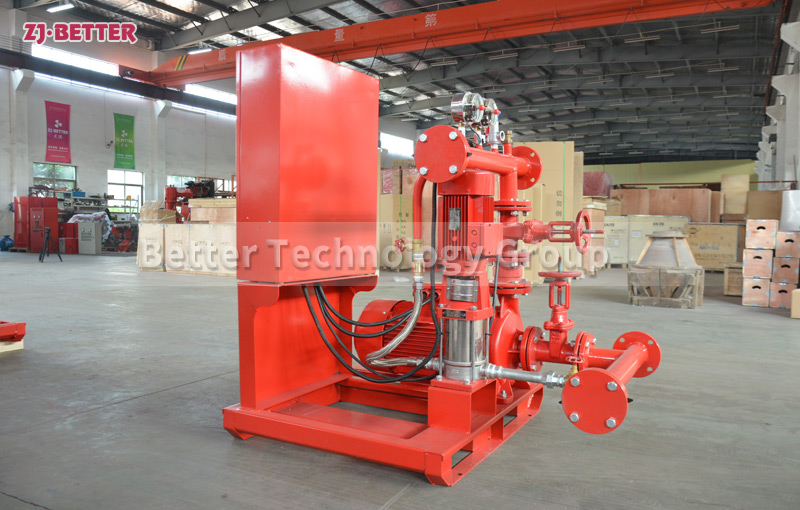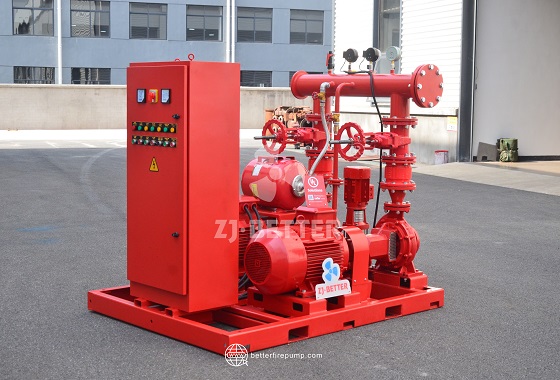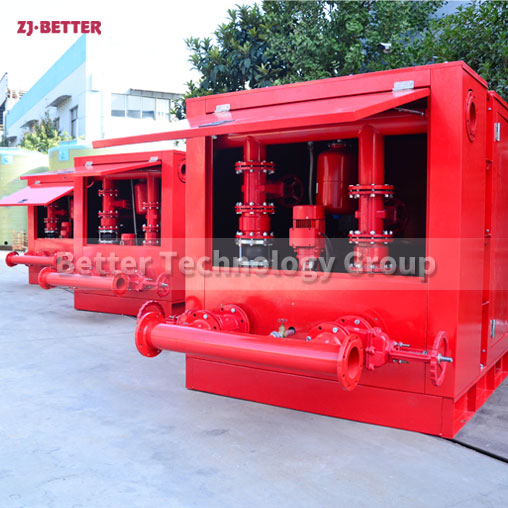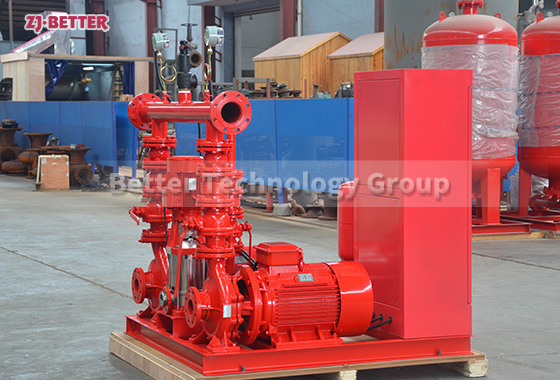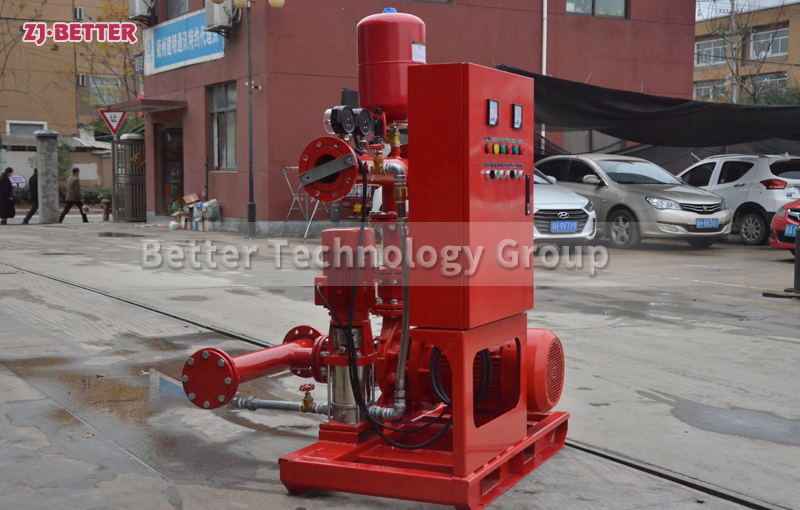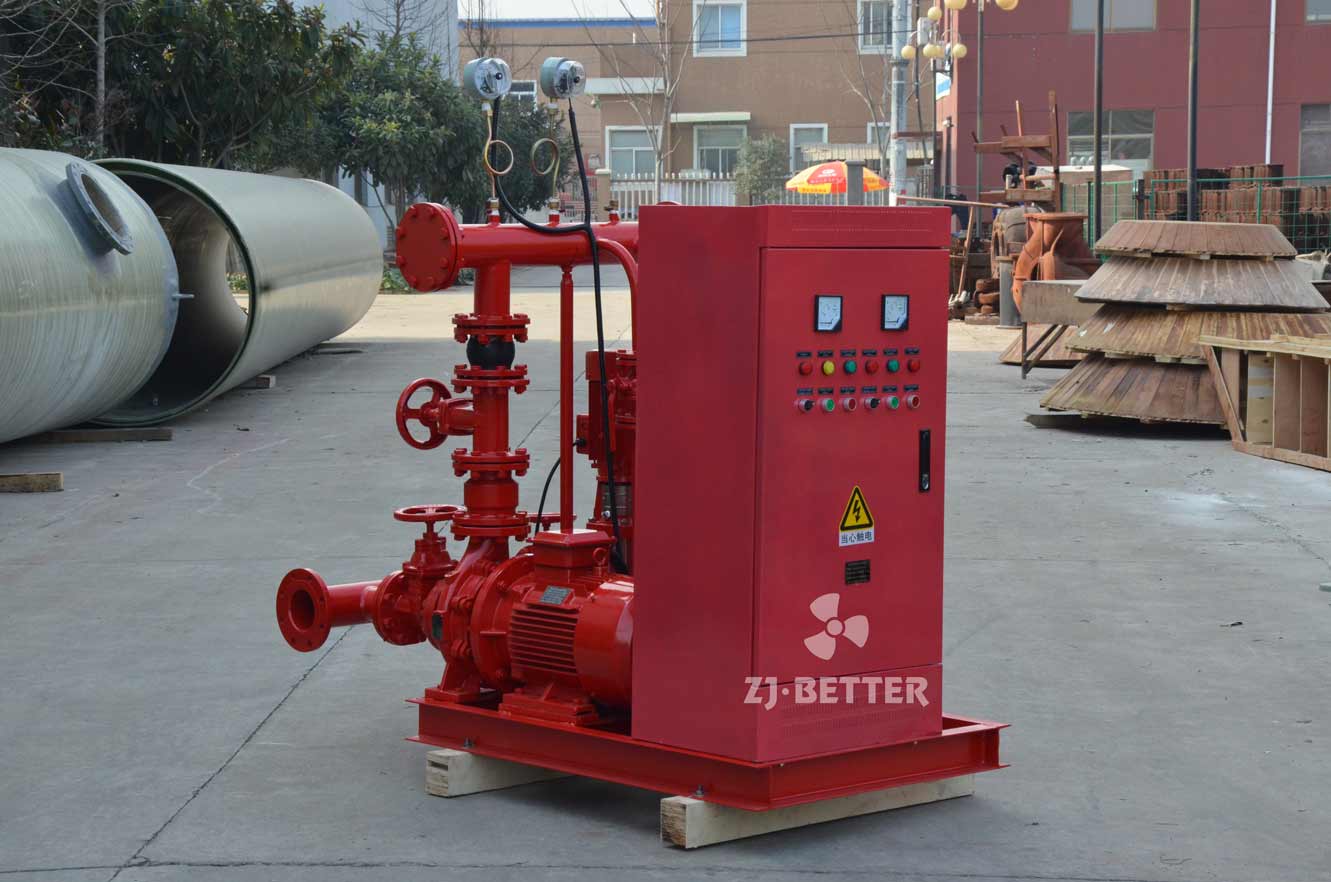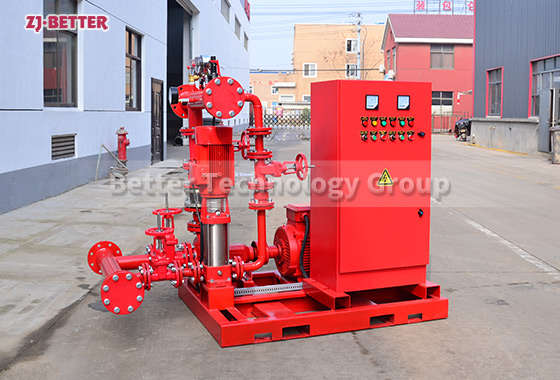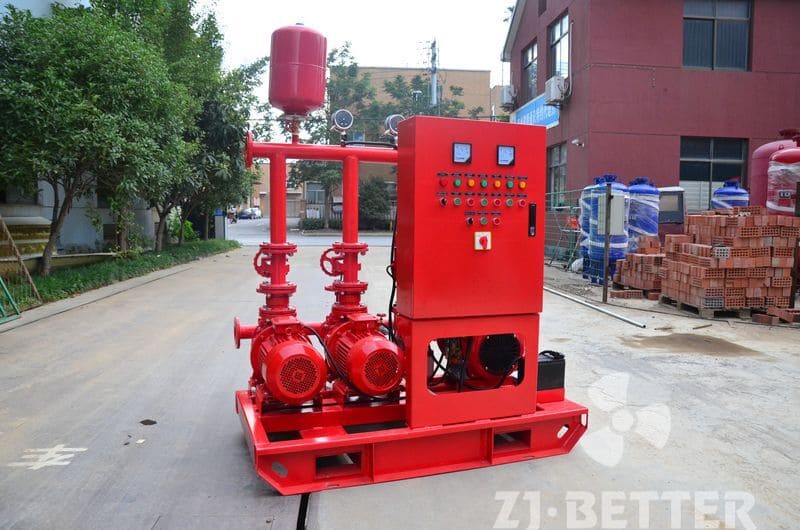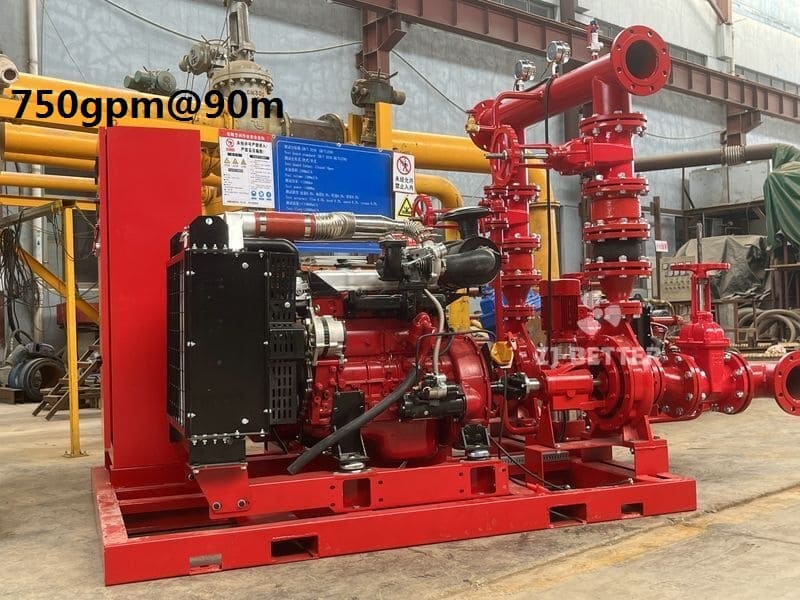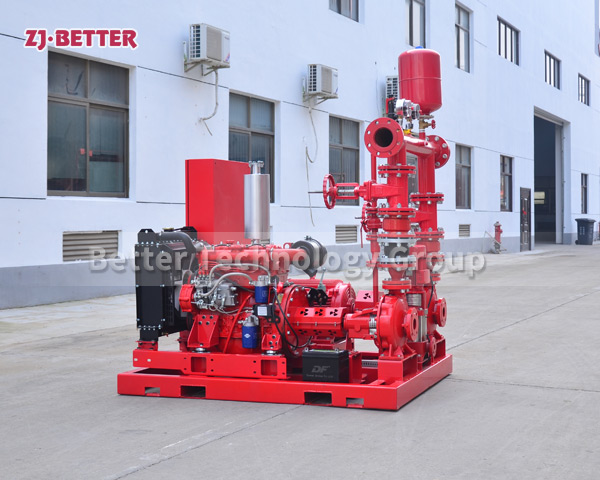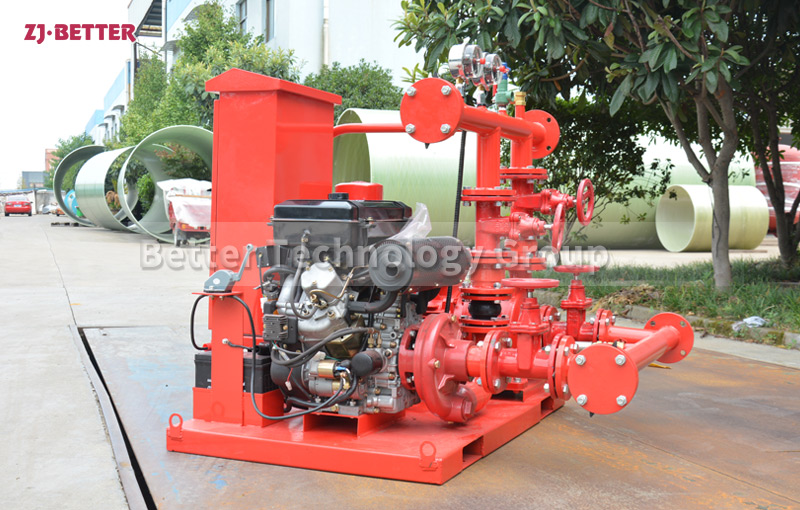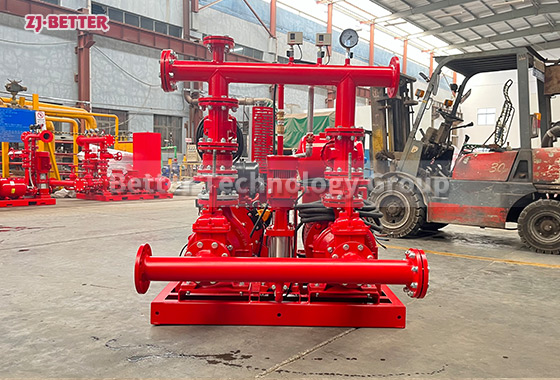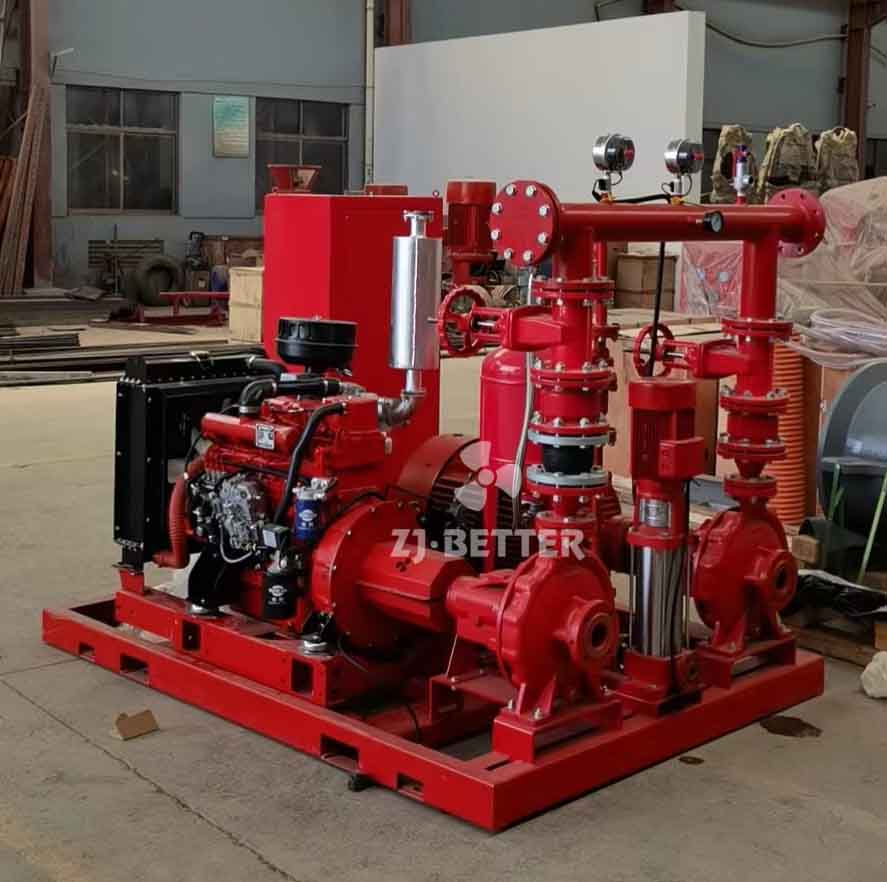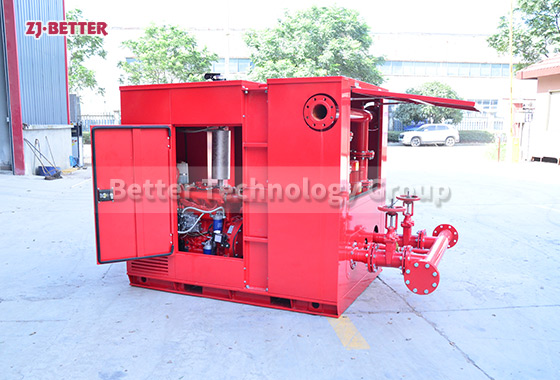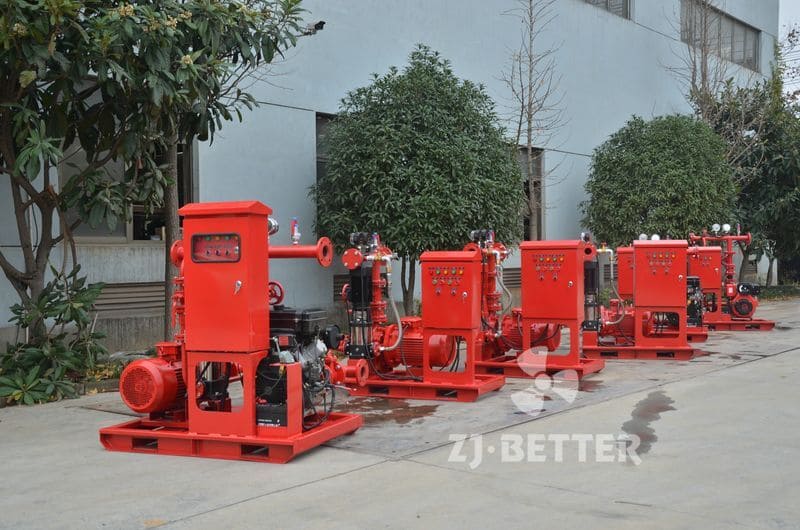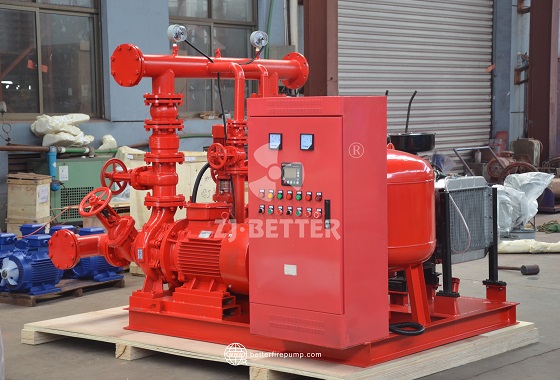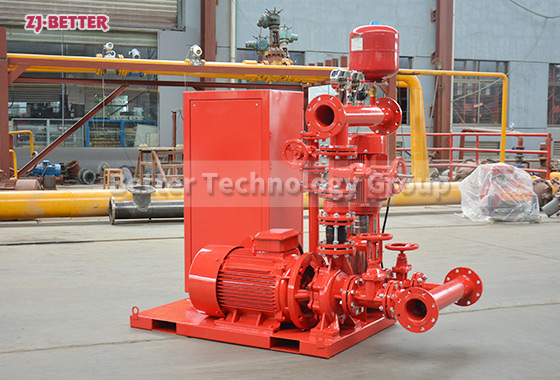EDJ fire pump set consisting of electric pump and diesel pump
The kit includes a main pump connected to the electric motor, a backup pump connected to the diesel engine, jockey pump, pressure vessel, controller for manual or automatic operation of the system and standard accessories on the base. Fire pumps shall be end-suction or single-stage horizontal split or horizontal multi-stage centrifugal, depending on system capacity and head requirements. The electric fire pump is flexibly coupled with the motor. The diesel engine is fixed on the base with an anti-vibration rubber pad, and the pump is directly coupled with the diesel engine through an elastic coupling, according to the power output of the engine.
EDJ fire pump set can be used for fire water supply in warehouses, docks, airports and other occasions. We usually choose the appropriate diesel engine fire pump model and application according to the head, flow, power, medium properties, and required materials provided by the user. In order to avoid mistakes, the loss caused by the installation environment will be comprehensively considered to ensure stable and reliable efficiency.
Diesel engine fire pump is a good water supply equipment, which is widely used in both ordinary water supply and fire water supply. As long as the appropriate model is selected to match the application, and the inspection and maintenance work is done well, the diesel engine fire pump will basically not fail. The diesel engine fire pump is highly automated, and can be equipped with different operating systems according to the needs of use. It has strong overload capacity, convenient maintenance and good starting characteristics. Since there are so many advantages in use, the daily inspection and maintenance work should be more meticulous. The daily maintenance of the diesel engine fire pump must check the fuel tank, battery, transmission connecting plate, connecting screws, check the three leaks (water, oil, gas) – check the sealing surface of the oil pipe and the water pipe joint, etc.

